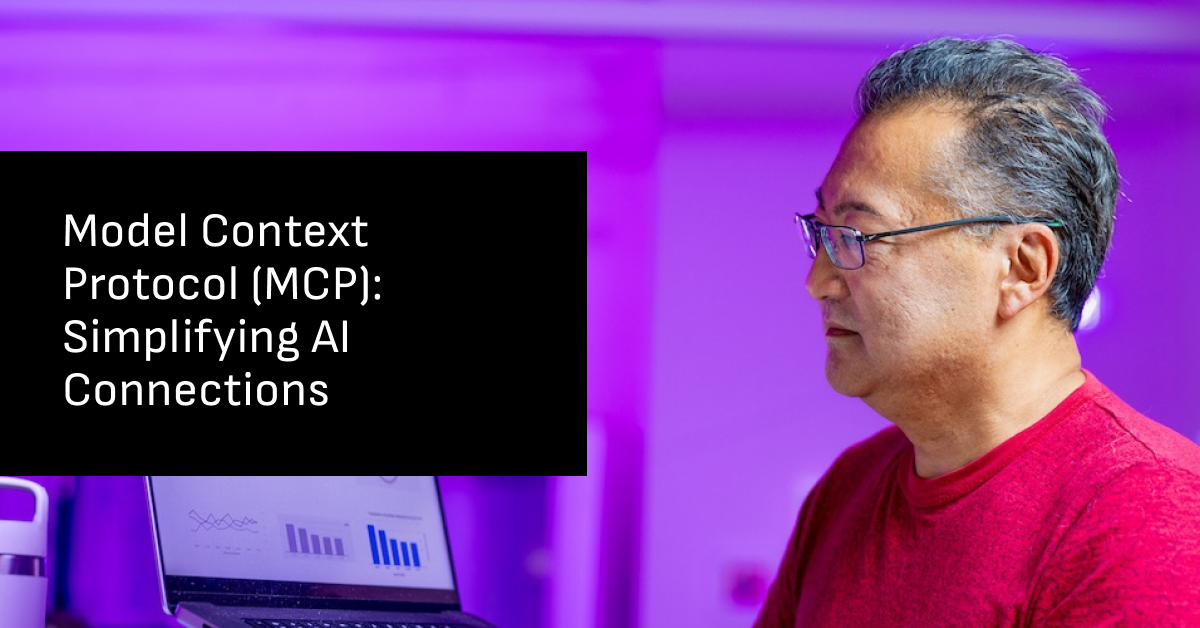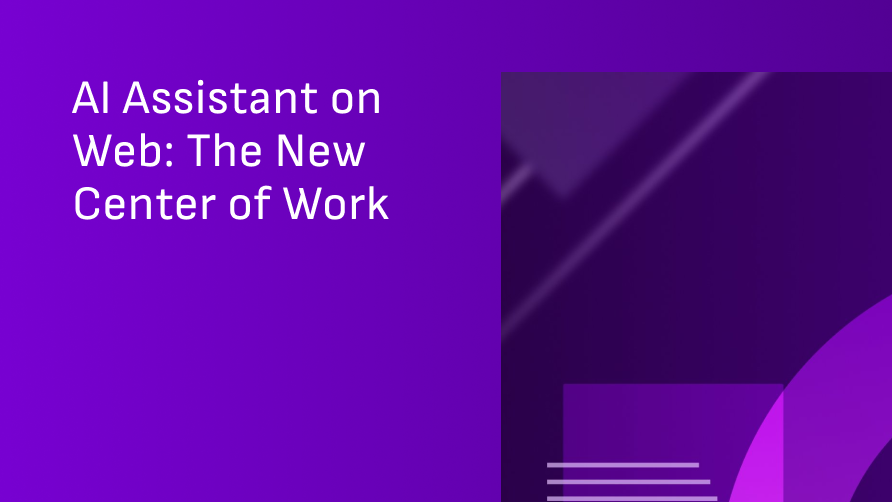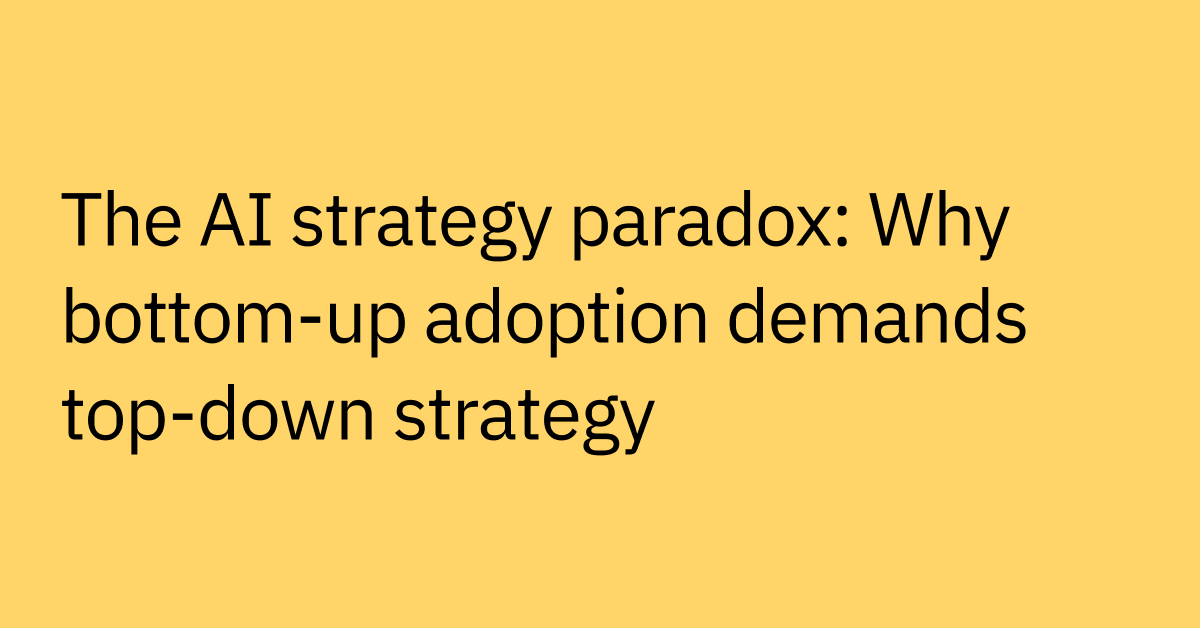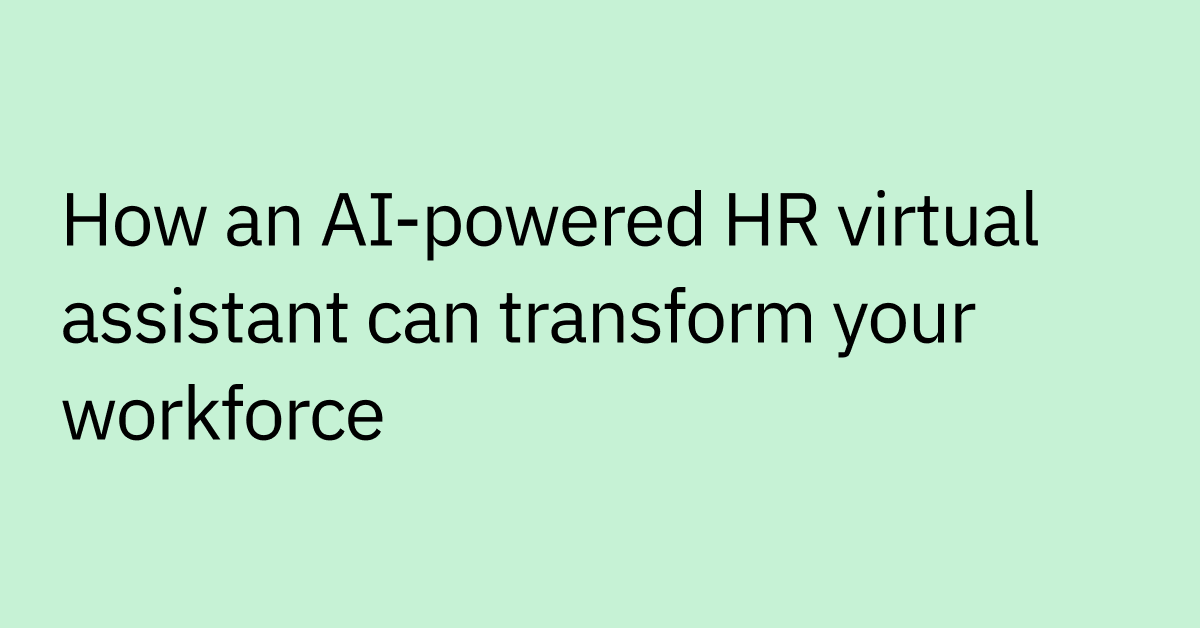By now, you’ve probably heard all the hype about Model Context Protocol (MCP). But what exactly is MCP? And can it really streamline AI integrations and reduce the need to build custom, case-by-case solutions?
MCP represents a promising approach that standardizes how AI models interact with different systems. That’s because MCP is a standard designed to help large language models (LLMs) connect seamlessly to external tools and services.
So, what makes MCP so special – and what challenges remain?
MCP helps AI models adapt to different contexts and data sources, helping to minimize friction and boosting overall capabilities.
When an enterprise can set up a robust, enterprise-ready foundation for MCP, it can help to make smoother integrations possible for developers, whether you need AI to chat with another app, access a database, or easily interact with customer service platforms,
MCP has the ability to cut through the complexity of linking up different systems, letting the developers use AI to do what it does best – without developers getting tangled up in technical complexity.
In this blog, we'll break down how:
- MCP elevates AI tool capabilities
- Limitations and challenges
- How MCP can lead to more effective and responsive AI experiences the right foundation
Whether you’re a developer, business owner, or tech enthusiast, we explore the foundations of MCP and how MCP is changing AI integrations.
What is Model Context Protocol (MCP)?
Model Context Protocol is a standard designed to help large language models connect more easily to external tools and services. Services that implement the Model Context Protocol (servers referred to as “MCPs”) enable LLMs to access and utilize external knowledge, tools, and data, significantly enhancing their versatility and power.
Driven by organizations like Anthropic, MCP is shaping how AI tools function by providing a reliable framework for integration and interoperability.
Essentially, MCP is intended to act as a universal translation layer between AI applications and the tools that can be used to add context and data to the conversation and take action in the world.
Why Model Context Protocol matters
MCP benefits organizations with AI tools by providing a standardized framework that ensures seamless integration and interoperability between various AI models and applications to help reduce complexity.
Standardization
MCP offers a standardized way to integrate APIs, meaning developers can use a common set of protocols to connect different systems. This reduces confusion and development time, as there's no need to learn new ways of doing things for each integration.
Open source integration
Open source Model Context Protocol (MCP) servers facilitate the smooth integration of AI agents and models with various tools, data sources, and services. This helps to create a more modular, flexible, and powerful AI ecosystem. They do this by acting as a standard interface, enabling AI systems to communicate and interact with different applications without needing custom integrations.
Reduced complexity
By eliminating the need to create separate, specific integrations for each tool, MCP simplifies development. Previously, if you wanted to connect a tool like Notion to different AI systems, separate integrations were needed for each; now, you can point to an MCP server and Notion will be able to know what’s available and how to get it.
With MCP, a single integration can communicate with any system that supports the protocol, reducing the workload for developers and accelerating the rollout of new features.
This standardization simplifies the deployment process, enhances compatibility, and reduces development time, allowing companies to more efficiently implement and scale their AI solutions
Understanding API challenges and MCP opportunities
Developers looking to let AI systems and AI agents securely access data from their companies' systems have traditionally faced a big integration challenge.
Typically, each organization designs their own method to integrate AI Agents with external applications – often involving creating custom APIs or middleware – with the goal of linking AI Agents with external applications, to empower these agents to perform tasks.
However, if each vendor works in their own unique way this hurts standardization. Differing approaches leave developers to pick up the slack and "glue things together", while increasing potential errors and inefficiencies.
Without a standard like MCP, developers must coordinate with every single AI provider to align on an integration setup that works.
For example, if you had AI Agents A & B, and Apps C & D – you might end up in a world where there are 4 different implementations (one for each vendor). But MCP standardizes how AI agents (MCP Hosts) access MCP assets, and it standardizes how applications (MCP servers) provide MCP assets.
In short, while MCP itself is not a technology shift or paradigm change – it's a crucial contract that the software world is agreeing to follow.
With MCP, you simply build an MCP server, and then every AI system that supports MCP can integrate, knowing available features and requirements.
Source: Sumeet Agrawal, Linkedin.
Benefits of MCP for AI applications
The Model Content Protocol is poised to change how AI applications are built and used, impacting both developers and everyday users.
Developers benefit by offering a straightforward way to link their systems to different AI platforms, speeding up access and increasing adoption by everyday users. For everyday users, MCP offers a chance to easily connect their LLM client of choice to their favorite tools, simplifying, and providing more context to their everyday experience.
However, certain challenges remain in enabling MCP to live up to its great potential.
MCP promise vs. reality: An enterprise perspective
MCP positions itself as a universal standard for connecting AI models to external tools and data sources. This sparks interest for ease of integration, but it can fall short for enterprises in important areas.
For developers, it can be liberating and enable them to rapidly experiment and integrate new services without complexity.
But enterprises face different realities. They require security, stability, operational predictability, and alignment with structured workflows.
For instance, adoption of MCP may encounter security challenges, as any given MCP server might not fully support robust encryption and access controls necessary for data protection. The specification's maturity can also cause issues, with evolving standards leading to integration inconsistencies.
Additionally, MCP might limit operational control, restricting dynamic customization and management needed for compliance. Workflow misalignment can occur if MCP doesn't fit with established processes, causing disruptions. Imagine an example where a user has requirements around saving commit information from Github into another application such as SFDC.
They might think to download a publicly available MCP server for both but this business requirement wouldn’t be captured in either, leading the user to either not follow this business requirement or having to create yet another MCP server directly for their needs.
Given these limitations, MCPs still need additional support and development to be able to deliver on these fronts.
Steps for MCP to enhance enterprise readiness
To evolve from a promising technology to a reliable enterprise standard, MCP users should consider adding capabilities to better address enterprise needs:
- Support and document a robust, enterprise-grade security framework that dictates how developers can better secure created MCP servers.
- Enhance the stability and clarity of the specification, incorporating predictable updates and comprehensive documentation.
- Introduce tools that provide clear operational oversight and control over AI interactions.
- Adapt MCP to align more closely with existing structured enterprise workflows, minimizing the need for businesses to adjust their current processes.
How we’re thinking about MCP at Moveworks
Model Context Protocol offers a promising framework for standardizing AI integrations, aiming to streamline and enhance the way AI models interact with external systems. While it currently faces some limitations, addressing these can pave the way for broader enterprise adoption.
We believe the ideal way to build highly-performant AI agents today is through Plugin Workspace and Agent Studio. However, we are also planning on being an open ecosystem and allow developers to bring AI agents for low-performance tasks via MCP servers.
That’s why Moveworks is developing this capability, helping to enable seamless connections to MCPs. By standardizing interactions and simplifying the integration process, we hope to enable MCPs to balance flexibility with the demands of structured enterprise environments.
True innovation requires consistent updates, strategic insights, and collaborative efforts with stakeholders. As companies adopt MCP protocols and continue to develop and mature, these are becoming a key part of AI ecosystems that are increasingly agile and context-aware.
Table of contents



